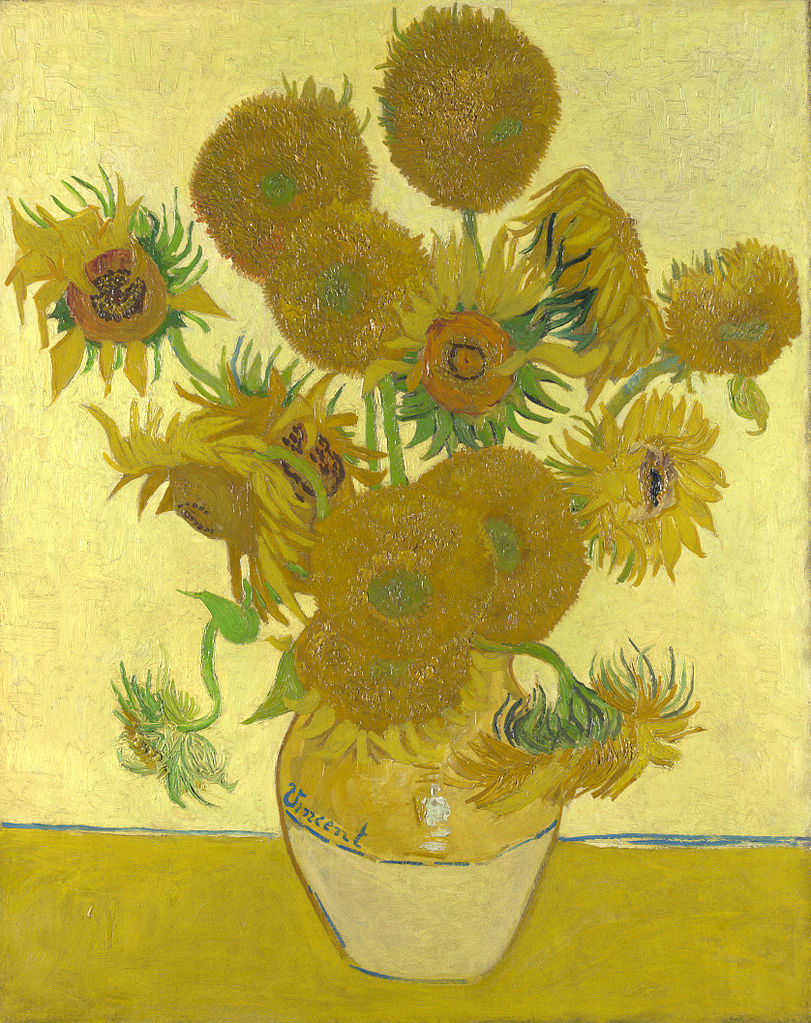Climate protests involving attacks on major artworks are becoming increasingly common nowadays. Environmental activists staging public demonstrations is nothing new, but targeting major works of art is something that really only caught people’s attention starting October 14th of this year. That was when a pair of activists from the environmental group Just Stop Oil threw tomato soup on Vincent van Gogh’s 1888 Arles Sunflowers at the National Gallery in London before gluing their hands to the wall. Nine days later, a pair of activists went to the Museum Barberini in Potsdam, right outside Berlin, where they threw some incredibly runny mashed potatoes all over one of Claude Monet’s Haystack paintings before similarly gluing their hands to the wall. Then, on Thursday, October 28, a climate protester in The Hague tried to glue his head to Girl with a Pearl Earring by Johannes Vermeer. And most recently, on November 15th, activists from the group Last Generation threw a black substance, probably meant to represent petroleum, all over Gustav Klimt’s Death and Life at Vienna’s Leopold Museum. Thankfully, all of these paintings were undamaged due to a layer of protective glass over each of them. While the paintings are unharmed, that has not mitigated the outrage against these actions. Many commentators and news outlets have described these protestors as “rebellious eco-zealots” engaging in a “campaign of chaos”.
While I completely understand the anger stemming from the lack of governmental action about our ongoing climate crisis that motivates these demonstrators, I couldn’t help but feel a little uneasy when I heard these stories. I certainly don’t approve of them, but I’m not going to be one of those stuffy commentators who are completely dismissive of these activists. Instead of dumping your dinner tray all over a priceless canvas, here’s what might be done. Climate protesters have targeted museums as institutions for quite some time. The British Museum, for example, has long been the target of climate activists. Not only are they one of the largest, most-visited museums in the world, but they are one of the only remaining major art institutions to maintain ties with petroleum giants like BP. The fact that they have continued digitizing their collections through NFTs, which have shown to have incredibly detrimental effects on the environment, doesn’t help improve their image. I don’t think many people have a problem with targeting museums as institutions because people visit museums to admire and appreciate the works they house. But when you go after those iconic works, many of which have become almost immediately recognizable in the broader public consciousness, some people will get mad.
Of course, no one has a problem with Monet or Van Gogh since the artists and their works are so far removed from the climate crisis. Rather, these activists hold their grievances against the institutions that house and maintain these great works of art. So, the demonstrations were meant not only to attract greater attention but to criticize the museums themselves, which often deserve a good deal of the criticism they receive regarding environmental policy. However, as symbolic as these protests were meant to be, the symbolism of these gestures was lost on many. Many see an attack on a painting simply as an attack on a painting, and that’s it. There are other more appropriate and effective ways for this kind of protest, but this is not one of them since it divides rather than unites.
Some people are likely incredibly supportive of such actions, while others are dismissive and outraged at these protests. However, I think most people fall directly in the middle. Like myself, I think most are torn between the dichotomy these protests have created. These protesters, mainly from Just Stop Oil and Last Generation, have given people a choice between art and the environment. However, until these attacks, I don’t think many people really thought this dichotomy existed. Most, especially young people, are incredibly aware of our environmental situation and what that means for our well-being in the future. But does that mean we must condemn all art to be destroyed by cans of soup?

